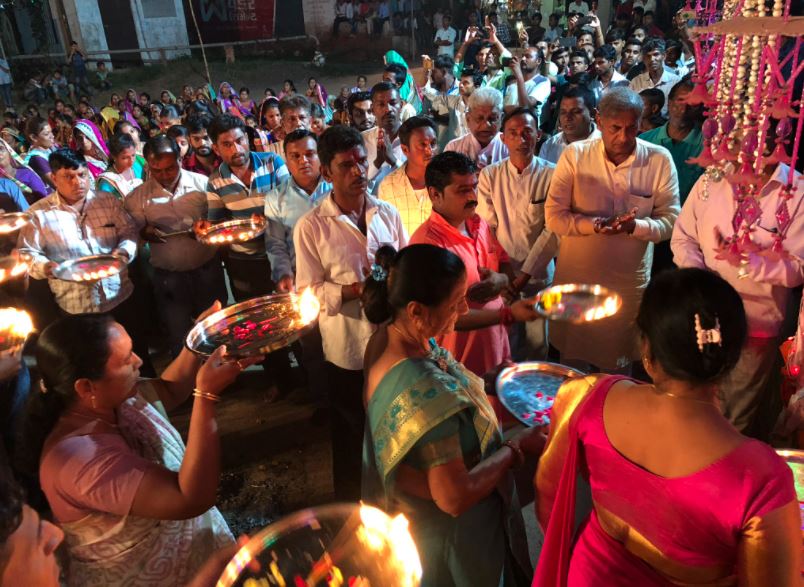New Delhi: Navaratri is a Hindu festival that is celebrated twice a year in India, during the month of April and the September- October months.
This year the festival began with the Ghatasthapana ritual on Monday, September 26, 2022, and will end with Dussehra/Vijayadashami celebration on the tenth day, i.e. on Wednesday, October 05, 2022.
The word Navaratri means nine nights in the Sanskrit language. Each day is dedicated to a specific deity and is associated with specific religious rituals with a colour designated for each day.
The festival is dedicated to Hindu goddess Durga and her incarnations, which are also known as Navdurga, and is celebrated with pompous and extravagant celebrations across the country. The eastern states of India worship goddess Durga and her triumph over the buffalo-demon Mahishasura.
They erect huge puja pandals and offer prayers to the goddess. There are several cultural festivals that also take place. Each day is dedicated to a particular deity. The pandal idols are emersed in water bodies on the tenth day.
However, the Northern states of India observe the nine-day festival to celebrate the victory of Lord Rama (an incarnation of Lord Vishnu) over a Demon-king named Ravana.
Ramlila is a mythological tale of Lord Rama and his miracles, as per the Hindu epic poem, Ramayana. The Ramlila is enacted on vast stages and grounds dedicated solely for Ramlila on all nine days. The Navaratri is observed as the triumph of good over evil.
Ramlila is enacted on stage, with actors dressing up as characters including Hanuman, Lord Rama- his brothers and his wife, Sita.
It also traces the journey of Lord Rama from his childhood till the death of Ravana and showcases how he rescued his wife, Sita from the clutches of the demon with an army comprising a handful of monkeys.
The tenth day of the festival is observed as Dussehra/Vijayadashami, wherein large scale effigies of demons Ravana, Meghnad, and Kumbhkarana are erected only to be burnt as a symbol of victory of good and perishing of the evil.
The actor playing Lord Rama burns the effigies on the tenth day, thereby signifying the end of the war in Sri Lanka. After this, Lord Rama and Sita embark on their journey towards Ayodhya, thus ending the exile.
Therefore, Diwali is celebrated on the day they reach their kingdom. However, these portions after the end of the war are not a part of the Ramlila.
People wear traditional clothes and observe fasting besides offering prayers. In western part of India, especially Gujarat and Maharashtra, people celebrate the festival by praying to Goddess Amba, another form of goddess Durga, and dance all nine nights to honour the goddess.
The dances, also known as raas garba and dandiya, are held on a large scale at various grounds and clubs across cities, with a huge footfall coupled with professional singers and/or djs and loudspeakers, singing and dancing to the tunes dedicated to the goddess. The dances are performed with mirth and keeping in tune with the festive spirit.
(Avya Mathur)

